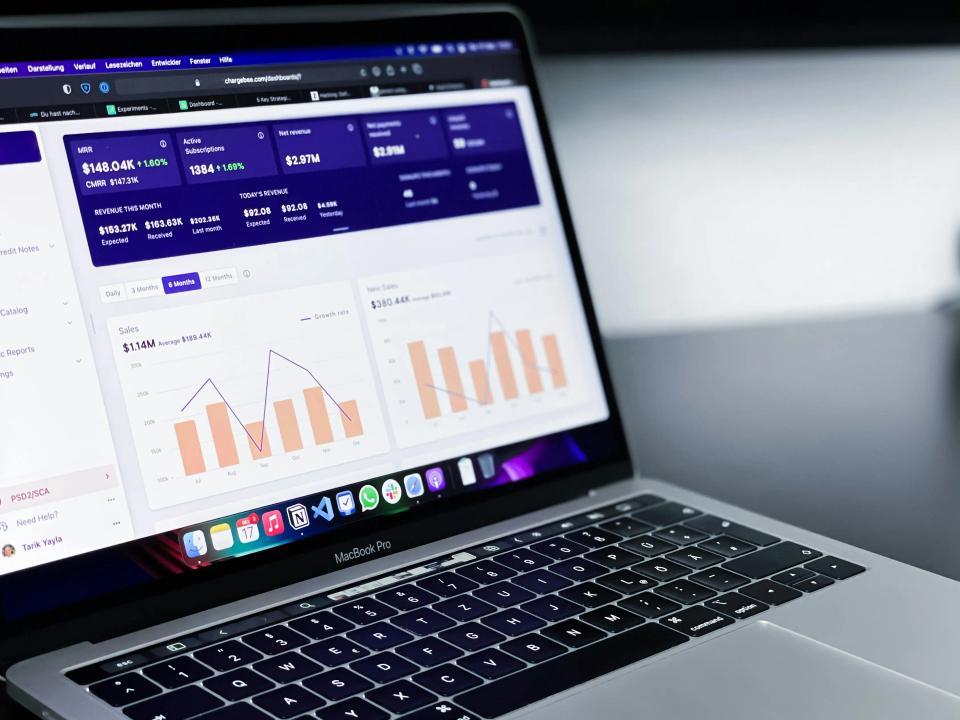Feeling the earth tremble beneath your feet? That’s the stampede of local customers searching for businesses just like yours, right now. But if you’re a multi-location business, are they finding all of you, or just a confusing, inconsistent mess? The dream of dominating every local market can quickly turn into a nightmare of fragmented branding and plummeting search rankings if you’re not careful.
This isn't just about dots on a map; it's about survival, growth, and outright market leadership in every community you serve. Neglecting consistent local SEO across your locations is like sending your soldiers into battle without a unified command – chaotic, ineffective, and ultimately, a path to defeat. The good news? You can conquer this. You can forge an unbreakable chain of local dominance, where every single location shines brightly, drawing in eager customers. Statistics reveal that nearly 46% of all Google searches are looking for local information (HubSpot/Think with Google), and businesses that verify their Google Business Profile information are twice as likely to be considered reputable by consumers (Google). The stakes are high, but the rewards are even higher.
Understanding the Foundations of Multi-Location SEO
So, you want every single one of your locations to be a local magnet, pulling in customers with irresistible force? It starts with understanding the bedrock of multi-location SEO. This isn't voodoo; it's a science, and it demands precision.
Key Components: The Pillars of Local Power
At the heart of your local strategy lies Google Business Profile (GBP) management. Think of each GBP listing not just as an entry, but as your primary digital storefront for that specific community. Get this wrong, and you might as well be invisible. Then there's your local content strategy; generic, one-size-fits-all messaging won't cut it. Each location needs to resonate with its unique neighborhood, speaking their language and addressing their specific needs.
Citation consistency is another non-negotiable. Imagine a customer finding three different phone numbers for the same store – instant confusion, lost trust, and a red flag for search engines. According to a BrightLocal study, 87% of consumers read online reviews for local businesses. This makes review management absolutely critical; your online reputation, amplified across all locations, can make or break you.
These components aren't just items on a checklist. They are the interconnected gears in your local marketing machine. Neglect one, and the entire system grinds to a halt, leaving you vulnerable and your competitors gleeful.
Common Challenges: The Dragons You Must Slay
Wrangling multiple locations presents a unique set of dragons. Brand consistency is a beast; how do you ensure one powerful brand voice when it's being broadcast from dozens, or even hundreds, of different points? Without a tight rein, your carefully crafted image can shatter into a million confusing pieces.
Then there's location-specific optimization. What makes customers flock to your Miami branch might leave your Seattle audience cold. Tailoring your approach is vital, but scaling that personalization without burning through resources is a Herculean task. This leads directly to the challenge of resource allocation – time, budget, and manpower are finite. Spreading them too thin means no single location gets the attention it truly needs to thrive.
And how do you know if any of it is working? Tracking performance across a sprawling network of locations can feel like navigating a labyrinth blindfolded. Without clear data, you're just guessing, and in the ruthless world of local SEO, guessing is a fast track to oblivion.
Google Business Profile Management for Multiple Locations
Your Google Business Profiles are the front doors to your local kingdoms. If these doors are locked, mislabeled, or lead to a broom closet, you’re losing customers before they even have a chance to consider you. Effective GBP management for multiple locations isn't just important; it's fundamental to your survival and growth.
Setting Up Location-Specific Profiles: Laying the Groundwork
When creating profiles for each location, don't just go through the motions. Best practices for profile creation demand meticulous attention to detail. This means ensuring every pin drop on the map is precise, service areas are accurately defined, and every available field is optimized with rich, local keywords.
Each profile must sing with location-specific information. Are the hours for your downtown branch different from your suburban one? Do you offer unique services or host local events at particular sites? This is where you transform a generic listing into a compelling local invitation. For businesses with ten or more locations, Google offers bulk location management tools, a lifesaver that prevents the soul-crushing task of updating hundreds of profiles one by one.
Ignoring these foundational steps is like building a skyscraper on quicksand. Sooner or later, it’s all going to come crashing down. Take the time to get it right from the start.
Maintaining Consistency: The Unifying Thread
Once your profiles are set up, the battle for consistency begins. Brand information standardization is paramount. Your logo, your core brand message, your tagline – these elements must be identical across every single profile. This unwavering consistency builds instant recognition and, more importantly, trust.
Category selection is another critical checkpoint. Choosing the most accurate and relevant primary and secondary categories ensures you attract customers actively searching for what you offer. According to Google, businesses with complete and accurate Google Business Profiles get 7x more clicks than ones with incomplete listings. Think about that – seven times the opportunity, just for getting the details right.
Don't forget photo guidelines; a picture truly is worth a thousand words, or in this case, potentially thousands in revenue. Ensure high-quality, locally relevant, and consistently branded images grace every profile. And finally, keep hours and special features meticulously updated – holiday hours, temporary closures, new services – because outdated information is a direct line to customer frustration and lost sales.
Creating a Unified Local Content Strategy
If your Google Business Profiles are the front doors, your website's location pages are the welcoming interiors. A disjointed or generic content strategy across these pages will leave potential customers feeling confused and disconnected. You need a unified approach that screams local relevance while reinforcing your core brand identity.
Website Structure: The Blueprint for Local Discovery
Your website's architecture is the skeleton upon which your local content strategy hangs. Location pages setup is non-negotiable; each physical location deserves its own dedicated, highly optimized page. This isn't just good for users; it's crucial for search engines to understand your geographic footprint.
Adopt URL structure best practices to make these pages easily discoverable and understandable. A clear, logical structure like yourbrand.com/locations/city-state works wonders. Then, weave these pages together with a smart internal linking strategy. This helps distribute link equity, improves navigation, and signals to search engines the importance and relevance of each local hub.
Think of your website as a well-organized city, with clear signposts (URLs) leading to distinct, vibrant neighborhoods (location pages). This clarity benefits both your human visitors and the search engine bots crawling your site.
Content Development: Speaking the Local Language
Now for the heart of it: the content itself. Location-specific content guidelines are essential. While maintaining brand voice, empower local teams or content creators to inject genuine local flavor. This could be highlighting community involvement, featuring local customer testimonials, or discussing neighborhood news relevant to your business. Content marketing gets three times more leads than paid search advertising (Content Marketing Institute), and localizing that content supercharges its effectiveness.
Dive deep into local keyword optimization. Go beyond generic terms and uncover how real people in each specific area search for your products or services. Utilize content templates and frameworks to ensure consistency in structure and core messaging, while still allowing room for that vital local personalization. And don't underestimate the power of user-generated content; encourage reviews, photos, and check-ins on your location pages. 93% of consumers say that online reviews influenced their purchase decisions (Podium), making your customers your most powerful local advocates.
Citation Management and Local Directories
Imagine your business's name, address, and phone number (NAP) scattered across the internet like pieces of a broken mirror – each reflection slightly different, distorted, and confusing. This is the nightmare of inconsistent citations, and it’s a silent killer of local SEO. Getting your information listed accurately and consistently across key directories is paramount to being found and trusted.
Citation Building Strategy: Planting Your Flags
Your citation building strategy needs to be deliberate and targeted. Start with the priority directories – the big names like Yelp, Yellow Pages, Apple Maps, and Foursquare. These are often the first places customers (and search engines) look after Google.
Then, dig deeper into industry-specific listings. Are you a restaurant? TripAdvisor and OpenTable are crucial. A home services company? Angi or HomeAdvisor. These niche directories carry significant weight within your specific sector. To amplify your efforts, leverage data aggregators like Neustar Localeze or Data Axle. Submitting your accurate information to these major players ensures it cascades down to hundreds of smaller online directories, saving you countless hours of manual work.
This isn't just about quantity; it's about quality and relevance. Being listed in the right places acts as a powerful vote of confidence for your business in the eyes of search engines.
Maintaining NAP Consistency: The Gospel of Accuracy
The golden rule of local citations is NAP consistency. Your Name, Address, and Phone number must be identical everywhere they appear online. Even minor variations can confuse search engines and erode their trust in your data, leading to lower rankings. Inconsistent NAP information is a major negative ranking factor for local SEO (Moz).
Thankfully, you don't have to fight this battle alone. Utilize tools for citation management like those offered by BrightLocal, Yext, or Semrush. These platforms can help you identify inconsistencies, submit correct information, and monitor your listings across a vast network of sites. Implement rigorous audit processes to regularly check your citations for errors – they can creep in unexpectedly.
And finally, establish clear update procedures. If a location moves, changes its phone number, or even alters its operating hours, this information must be updated across all your citations immediately. Outdated information doesn't just hurt your SEO; it directly frustrates customers and can lead to lost business.
Review Management and Response Strategy
In the digital town square, your online reviews are the loudest voices. They can sing your praises, drawing crowds, or shout warnings, driving potential customers away. For multi-location businesses, managing this chorus effectively across all storefronts is a high-stakes game that demands a robust strategy.
Centralized Review Monitoring: Your Command Center
You can't manage what you don't see. Implement tools and platforms designed for centralized review monitoring. These systems aggregate reviews from Google, Yelp, Facebook, and industry-specific sites into a single dashboard, giving you a bird's-eye view of your reputation across all locations.
Develop response templates to ensure timely and consistent replies. While personalization is key, having pre-approved frameworks for common positive feedback and constructive criticism helps maintain brand voice and efficiency. Crucially, engage in performance tracking: monitor review volume, average star ratings, sentiment analysis, and response rates for each location. This data will highlight your star performers and pinpoint locations needing urgent reputational care.
Ignoring reviews is like letting hecklers control the narrative about your brand. Proactive monitoring and engagement turn potential crises into opportunities for connection and improvement.
Location-Specific Review Management: Empowering the Front Lines
While centralization is vital for oversight, the actual engagement often benefits from a local touch. This requires training local teams – your store managers or designated staff – on how to respond to reviews appropriately. They are on the ground, understand the local context, and can often provide the most authentic and helpful replies.
Equip them with clear response guidelines. These should cover tone of voice, escalation procedures for serious issues, and how to turn negative feedback into a positive resolution. According to ReviewTrackers, 45% of consumers say they’re more likely to visit a business if it responds to negative reviews. This underscores the power of thoughtful engagement. Finally, implement ethical review generation strategies. Make it easy for satisfied customers to share their positive experiences by providing direct links or subtle in-store prompts.
Technical SEO Considerations
Beneath the surface of compelling content and consistent listings lies the technical framework of your website. If this foundation is shaky, all your other local SEO efforts can be undermined. For multi-location businesses, technical precision is not just a recommendation; it's a requirement for widespread visibility and success.
Website Architecture: The Unseen Engine
Is your website a sleek, high-performance vehicle, or a clunky old jalopy? Mobile optimization is non-negotiable. With over 60% of Google searches now coming from mobile devices (Statista), a site that isn't flawless on smartphones and tablets is actively turning away the majority of its potential local customers.
Loading speed is another critical factor. Every fraction of a second your pages take to load, you're bleeding visitors and potential revenue. Aim for load times under three seconds; anything more, and users will bounce faster than a dropped call. Finally, embrace Schema markup implementation. Using local business schema, organization schema, and other relevant structured data helps search engines understand the specifics of each location – NAP, hours, services offered – with crystal clarity, often leading to richer search results.
These technical elements are the unsung heroes of local SEO. Get them right, and you provide a smooth, fast, and understandable experience for both users and search engine crawlers.
Local SEO Tools and Analytics: Your Navigational Instruments
You wouldn't sail a ship without a compass and charts, so why navigate the complex waters of multi-location SEO without the right tools? Invest in robust tracking tools. Google Analytics and Google Search Console are your starting points, offering invaluable insights into how users find and interact with your site, including your location pages. Supplement these with specialized local rank trackers to monitor your visibility in the map pack and local organic results for each target area.
Define and monitor key performance metrics. For local SEO, this includes organic traffic to location pages, click-to-call rates, requests for driving directions, and keyword rankings within specific geographic zones. Businesses that appear in Google's local pack often receive a significant share of clicks, sometimes more than the organic results below them (various SEO studies, e.g., BrightLocal). Tracking your presence here is vital. Establish clear reporting systems that distill this data into actionable insights, allowing you to demonstrate ROI and continuously refine your strategy.
Brand Consistency Across Locations
Your brand is your promise to your customers. When that promise feels different from one location to the next, trust erodes, and confusion reigns. For multi-location businesses, maintaining iron-clad brand consistency isn't just about looking good; it's about building an unshakeable foundation of recognition and reliability.
Brand Guidelines: Your Brand's Constitution
Think of your brand guidelines as the constitution for your entire organization. This document should meticulously detail all visual elements: precise logo usage, approved color palettes, typography standards, and imagery style. Every customer touchpoint, from a local Facebook page to an in-store sign, should instantly feel like your brand.
Beyond the visuals, define your voice and tone. How do you speak to your customers? Are you witty and informal, or authoritative and formal? This verbal identity must be consistent across all communications, ensuring your brand personality shines through, no matter which location is speaking. While consistency is king, allow for smart local adaptations within strict parameters. Sponsoring a local Little League team is great community engagement; creating an entirely different marketing campaign for one branch is brand sabotage.
A well-defined and enforced set of brand guidelines ensures that every location acts as a harmonious extension of the core brand, strengthening its overall impact.
Quality Control: The Guardians of Your Brand
Creating guidelines is one thing; ensuring they're followed is another. Implement robust monitoring systems to regularly audit the online and offline presence of each location. This includes checking Google Business Profiles, social media activity, local directory listings, and even the physical appearance of storefronts where feasible.
Establish compliance checks to verify that all locations are adhering to the established brand standards. These checks can identify deviations before they become significant problems, protecting your brand's integrity. According to Lucidpress, brand consistency across all platforms can increase revenue by up to 23%. This isn't just about aesthetics; it's about tangible financial returns. Invest in training programs for all staff, particularly local managers, to educate them on brand standards and, crucially, the why behind them. When your team understands the value of consistency, they become its most ardent protectors.
Measuring Success and ROI
You're pouring time, effort, and resources into your multi-location SEO strategy. But how do you know it's working? How do you prove its value and justify continued investment? The answer lies in meticulous measurement and insightful analysis.
Key Performance Indicators (KPIs): Your Scorecard for Success
To truly understand your impact, you need to track the right Key Performance Indicators (KPIs). Focus on location-specific metrics for granular insights. These include leads generated (phone calls, form submissions from location pages), click-to-call actions, requests for driving directions, website visits to individual location pages, and local keyword rankings for each specific market.
Don't lose sight of overall brand performance. Aggregate data from all locations to see the bigger picture. Is the collective effort lifting the entire brand's visibility and authority in local search? Conduct regular competitive analysis to see how your locations are faring against their direct local competitors. Are you gaining market share, or are others eating your lunch?
These KPIs are more than just numbers; they are the vital signs of your local SEO health. They tell you what's thriving, what's ailing, and where to focus your healing touch.
Reporting and Analysis: Turning Data into Action
Data is useless without interpretation. Set up a comprehensive dashboard that consolidates your most important KPIs into an easy-to-understand visual format. This provides at-a-glance visibility into performance across all your locations. Companies that excel at lead nurturing generate 50% more sales-ready leads at a 33% lower cost (Forrester Research) – and effective local SEO is a powerful lead nurturing tool.
Conduct regular audits of your performance – monthly or quarterly reviews are essential. Don't just set your strategy and forget it; the digital landscape is constantly shifting. Use these audits to identify trends, successes, and areas needing improvement. Most importantly, use this analysis for performance optimization. Double down on tactics that are delivering results, and re-evaluate or overhaul strategies that are falling short. This continuous cycle of measurement, analysis, and optimization is the engine of sustained local SEO success.
Future-Proofing Your Multi-Location SEO Strategy
The digital landscape is a relentless shapeshifter. What works today might be obsolete tomorrow. To maintain your hard-won local rankings and brand consistency, you must not only master current best practices but also anticipate and adapt to the future of local search.
Emerging Trends: The Shifting Sands
Keep a keen eye on emerging trends. Voice search optimization is no longer a futuristic fantasy; it's a present-day reality. Customers are increasingly asking "Hey Google, find a [your business type] near me." Are your local listings and content optimized for these conversational queries? The global voice search market is projected to reach significant growth in the coming years (various market reports, e.g., Global Market Insights projects $30 billion by 2024 for the broader voice assistant market), and local businesses are at the forefront of this shift.
AI and automation are also transforming the SEO landscape. Artificial intelligence can help analyze vast amounts of local data, personalize content at scale, and even automate aspects of listing management and review responses. Embrace these technologies to gain an edge. And be aware of the constant local search evolution. Google is always tweaking its algorithms, introducing new Map Pack features, and changing how local information is displayed. Agility is key.
Staying informed about these trends isn't just about being cutting-edge; it's about ensuring your multi-location strategy remains effective and doesn't get left behind.
Adaptation Strategies: Evolving to Thrive
Awareness of trends is only half the battle; effective adaptation strategies are what truly future-proof your efforts. Commit to regular updates of your entire local SEO strategy. What worked six months ago might need adjustment based on new algorithm updates, competitor actions, or shifts in consumer behavior.
Actively pursue technology integration. Don't be afraid to adopt new tools and platforms that can streamline your processes, provide deeper insights, or enhance your local presence. Perhaps most importantly, invest in continuous team training. The skills required for effective local SEO are constantly evolving. Ensure your team, from central marketing staff to local managers, has the knowledge and capabilities to execute a modern, adaptive strategy.
By building a culture of continuous learning and proactive adaptation, you can ensure your multi-location business not only survives but thrives in the ever-changing world of local search.
Conclusion: Your Blueprint for Local Conquest
Juggling the demands of a multi-location business in the digital age can feel overwhelming. But as we've seen, achieving consistent branding and top local rankings across all your outposts isn't a pipe dream – it's a strategic imperative that's entirely within your grasp. From meticulously managing each Google Business Profile to crafting a unified yet locally resonant content strategy, and from ensuring iron-clad citation consistency to mastering the art of review engagement, every step is crucial.
The key is a systematic approach, unwavering attention to detail, and a commitment to consistency. Technical SEO, robust brand guidelines, and insightful performance measurement are the supporting pillars that transform effort into tangible results – more calls, more store visits, and ultimately, more revenue from every single community you serve. Don't let the complexity paralyze you; the path to local dominance is paved with deliberate, consistent action.
Your journey to conquering local search for every one of your locations starts now. Begin with a thorough audit of your current online presence. Prioritize the accuracy and completeness of your Google Business Profiles and ensure your website offers unique, valuable content for each locality. You can tame the multi-location beast. You can make every single one of your business locations a beacon that draws customers in.













